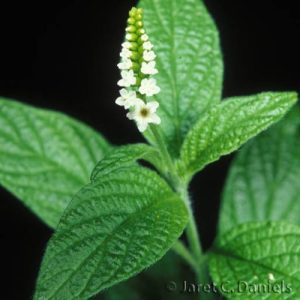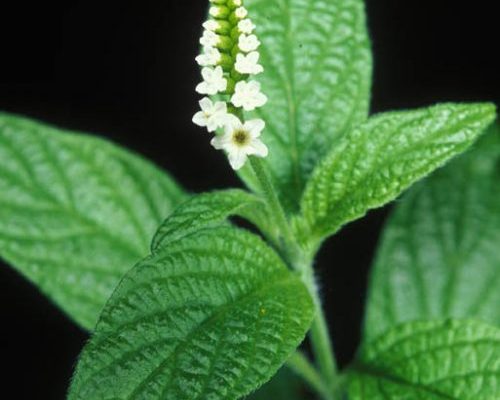Scorpion Tail (Heliotropum-angiospermum)
Breast Cancer Treatment Using Scorpion Tail (Heliotropum-angiospermum)

is an annual or short-lived perennial of upright to sprawling habit. Blooming year-round, it has been used by different natives to cure several illnesses as traced back to the days of our ancestors. some of its uses are to treat a variety of skin ailments, sores, burns and bites, to clean the skin of newborns, to stimulate menstruation and induce abortions, to treat gout and as an anti-inflammatory. But the video below throws light on how to use the plant to treat breast cancer.
Properties and health benefits
The plant has therapeutic properties due to the presence of chemical components viz. Pyrrolizidine Alkaloids, Tannins and Saponins. Alkaloid component (indicine principal base, echinatine, supinine, heleurine, heliotrine, lasiocarpine and lasiocarpine N-oxide) is responsible for anti-inflammatory, wound healing, antiseptic, antimicrobial, febrifuge, stimulation of gall bladder functions and menstruation stimulating properties.
The plant is reported to possess antibacterial, anti-tumour, uterine stimulant effects, antifertility, wound healing, anti-inflammatory, antinociceptive and diuretic activities.
However, it is important to note that the plant contains pyrrolizidine alkaloids, which can be toxic to the liver and cause other health problems if consumed in large quantities
Some uses of scorpion tail plant
A decoction made from the leaves of this plant is used as a vermifuge. The juice from the leaves has antiseptic and anti-inflammatory properties and can be applied topically to wounds, sores, boils, gum-boils, pimples on the face, warts, tumours, yaws, skin allergies, scabies, eczema, and inflammation of the eyes. To make an eyewash, boil three leaves in one cup of water for ten minutes, then strain.
A poultice made from the leaves can be applied to rheumatic pain, insect stings, and wounds. For scorpion stings and snakebites, apply a paste made from the leaves topically.
This plant has diuretic properties, which means it increases urinary output and electrolyte excretion. Diuretics, also known as water pills, are useful in treating various diseases such as high blood pressure, fluid retention, oedema, acute and chronic renal failure, sciatica, kidney stones, lymphatic swelling, glaucoma, liver disorders, and many other diseases. Infusing the leaves has a strong diuretic effect.

